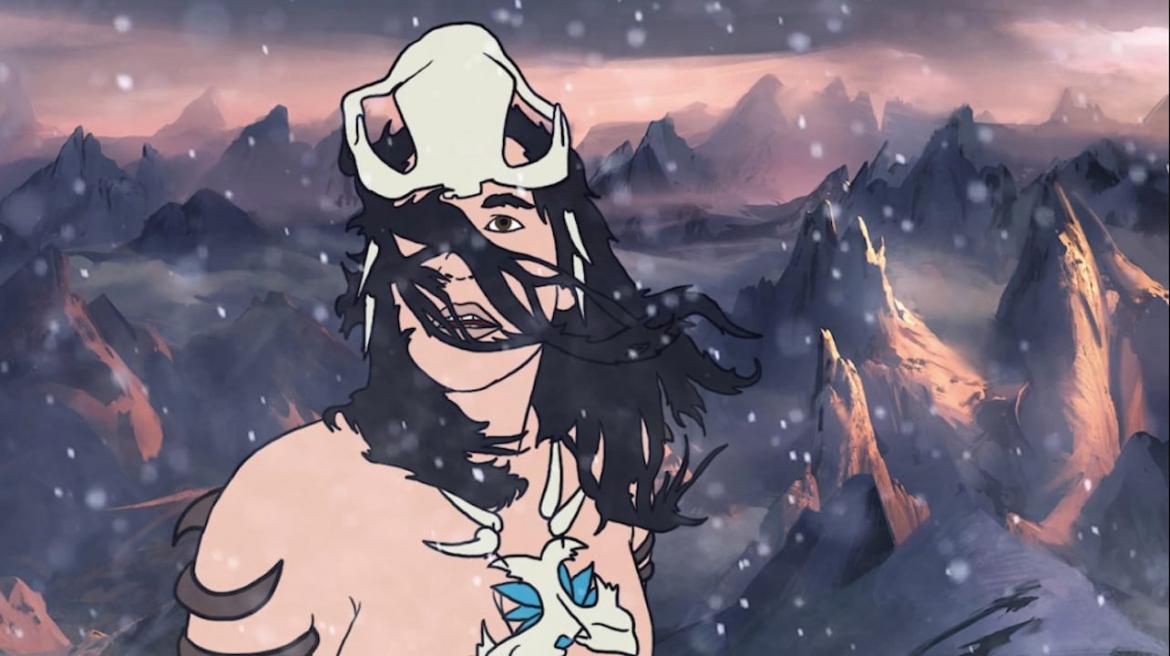
The Spine of Night (Movie Review)
Legions of newly minted epic fantasy fans were left with a draconic shaped hole in their hearts following the conclusion of the Game of Thrones television series. Morgan Galen King and Philip Gelatt’s 7-year passion project, The Spine of Night, looks to capture that audience with its impressive rotoscope animation chock full of magical awe, brutal violence and a killer voice cast that includes Joe Manganiello, Lucy Lawless, Betty Gabriel, Richard E. Grant and Patton Oswalt.
Of course The Spine of Night is a much different beast when compared to the adaptation of George R. R. Martin’s fantasy novels. The film has more in common with 1981’s Heavy Metal or the work of Ralph Bakshi as an animated cosmic adventure targeting an adult audience. Like Heavy Metal, The Spine of Night takes an anthology approach that centers around a mystical and magical flower called ‘The Bloom’, a coveted item of knowledge and power that is stolen by a maniacal scholar who then transforms into a malevolent sorcerer. It’s up to a slew of heroes of different backgrounds and different chorologies to defeat the growing evil.
The Spine of Night is a movie that almost didn’t happen in the final hours before it’s premiere at the 2021 SXSW Film Festival. Therefore, the artistry of it all and the persistence to retrieve and reassemble the work is commendable. The rotoscoped animation is meticulously crafted and set amongst breathtaking backgrounds and set pieces. There are several instances where the scenic backgrounds are presented as stunning works of standalone art, accentuating the fantasy elements and giving the film an impressive scope with epic ambitions. The choice to do this all utilizing rotoscoped animation techniques only adds an impressive layer of dedication to the craft behind it all.
And yet, for all the spectacular art on display none of it can make the narrative shine. It may take someone with a keen interest in this very specific type of storytelling to chew the tough meat the plot consists of as it flows aggressively against the mainstream. The Spine of Night doesn’t have the benefit of audiences coming in with a learned knowledge of where it’s coming from, but invents a fantasy narrative that viewers will have to soak up and comprehend on the fly. Repeat viewings could play well into Galett and King’s hands leading this to eventual cult celebrity status, but the first viewing is likely to leave some a little cold and never lead into a desire to revisit. The mythology is laid on pretty thick and the interchanging characters we encounter throughout its anthology structure doesn’t leave much room to digest narrative developments that breeze by in a wave of beautiful carnage, leaving the violence as the only memorable component of any given section.
Still, the visual style acts as somewhat of a bridge to the inaccessible nature of the narrative, finding inroads into the complex and bizarre storytelling through the beautiful and bloody heart beating at the center. Bewitching as the art direction is, the blood soaked images littered throughout match that beauty with a grotesque fascination. The style at which the violence is displayed is creative and boundless. The nonstop bloodshed and character designs reinforce the adult focused nature, but it weaves away from presenting the nude or mostly nude characters as sexualized but more of a historical choice in the mythology of the times the film takes place in.
Gelatt and King’s vision re-lights the wonder of what genre animation can be. Limitless, epic, artistic and downright nasty. The Spine of Night may not turn heads for its storytelling prowess, but it is a testament to filmmaking as an art in all facets.
Screened as part of the 2021 SXSW Film Festival.

